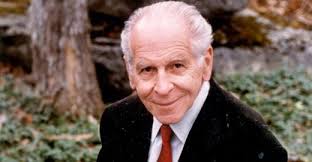Originally published January 26, 2007
The Constitution says that to be elected to the U.S. Senate, a person has to be 30 or older, a citizen for at least nine years, and a resident of the state from which the candidate is elected.
Alas, it says nothing about knowing American history.
Good thing for Sen. Lindsey Graham (R-S.C.). He’d have to find honest work.
Interviewed after Tuesday night’s State of the Union address, Graham was asked about the situation in Iraq. Trying to put the difficulties in perspective, he said the United States did not get its constitution until 1789.
Buzz! Wrong answer, Sen. Graham. But as a consolation prize you get to take home a copy of Merrill Jensen’s book The New Nation: A History of the United States During the Confederation, 1781-1789 . We’ll also throw in a copy of Herbert Storing’s What the Anti-Federalists Were For. And thanks for playing our game.
Seriously, I realize that children learn virtually nothing about the eight years before 1789 during which the United States existed under the Articles of Confederation. But shouldn’t someone who holds himself qualified to be a U.S. senator know that what we call the Constitution was really America’s second constitution?*
The Articles were adopted by the Second Continental Congress on November 15, 1777, and took effect after ratification on March 1, 1781. That was seven months before Cornwallis surrendered at Yorktown on October 19, 1781, and two and a half years before the Treaty of Paris was signed on September 3, 1783.
The Articles remained in effect until the Constitution displaced them in 1789.* The process by which the Articles were scrapped — rather than amended — in favor of an entirely new blueprint was dubious. As the Anti-federalist Federal Farmer (most likely Melancton Smith of New York) wrote in October 8, 1787,
“A general convention for mere commercial purposes was moved for — the authors of this measure saw that the people’s attention was turned solely to the amendment of the federal system; and that, had the idea of a total change been started [sic], probably no state would have appointed members to the convention. The idea of destroying, ultimately, the state government, and forming one consolidated system, could not have been admitted — a convention, therefore, merely for vesting in congress power to regulate trade was proposed.” [Emphasis added.]
Eight years is a significant period for a nascent country to endure after breaking away from an empire. Sen. Graham’s remarks were meant to suggest that what took place in the United States during that time was similar to what’s taking place now on in Iraq. But that is ridiculous. The 13 states did not embroil themselves in civil war or sectarian violence — neither internally nor with one another. Quite the contrary.
Freed from Central Coercion
How was life under the Articles of Confederation? As Merrill Jensen writes, “Americans fought against and freed themselves from . . . coercive and increasingly centralized power . . . . They did not create such a government when the Articles of Confederation were written, although there were Americans who wished to do so. . . . Thus the American Revolution made possible the democratization of American society by the destruction of the coercive authority of Great Britain and the establishment of actual local self-government within the separate states under the Articles of Confederation.”
Under the Articles, Congress had no power to tax or to erect trade barriers. If it needed revenue it had to petition the states. There was no separate executive branch, with all its potential for de facto quasi-monarchization.
People in the new states, Jensen writes, were full of optimism about the possibilities ahead. Criminal codes were made more humane, with the death penalty removed for all crimes but murder and, in some cases, treason. Property qualifications for voting were abolished over time. Charities and mutual-aid societies were formed, along with library, scientific, and medical associations. Schools were founded. The union of church and state was increasingly opposed. The steps in the direction of religious freedom and the complete separation of church and state were thus halting, but the direction was sure and the purpose was clear, Jensen writes.
Of course there was slavery, which contradicted the philosophy espoused in the Declaration of Independence. But some states moved against it. Within a few years after 1775, either in constitutions or in legislation, the new states acted against slavery. Within a decade all the states except Georgia and South Carolina had passed some form of legislation to stop the slave trade, Jensen writes. New England states and Pennsylvania took steps toward abolition, and anti-slavery societies flourished.
What about the economies of the states? We can infer much from the fact that those who wanted to overthrow the Articles for a new constitution warned of coming economic turmoil if the central government were not fortified. Hence turmoil was a prediction not a description. Although individuals (white males) were free to a hitherto unknown extent, the states were no models of laissez faire. (But then neither was the consolidated national system after 1789. The first economic action of the first Congress under the Constitution was imposition of a protective tariff.)
Rent-seeking (political entrepreneurship) was rampant in the states, as it has been in every real-world system. Subsidies, loans, trade restrictions, and land giveaways were common. In this largely agrarian society, Jensen writes, the dominant note was sounded by American merchants and business men who lived mostly in the seaport towns. . . . Their power was born of place, position, and fortune. They were located at or near the seats of government and they were in direct contact with legislatures and government officers. They influenced and often dominated the local newspapers which voiced the ideas and interests of commerce and identified them with the good of the whole people, the state, and the nation. (Hence, the bad name capitalism has for many people.)
Merchants and manufacturers disagreed on what kind of government intervention should exist, but not on whether it should exist. That’s because they had different competitors. Merchants liked imports but wanted barriers to foreign (especially British) shipping, while manufacturers wanted barriers to foreign goods and didn’t care about shipping. Part of the impetus toward a strong central government was business’s desire for a uniform national economic policy, since individual states, acting alone, could hurt themselves by having more stringent restrictions than their neighbors and one state could capture the lion’s share of trade by competitively lowering its barriers. In other words, the consolidation of 1789 was part regulatory cartel.
Regional Differences
There were also regional differences. Most manufacturing was in the North, so protectionist sentiment was concentrated there. The South had little manufacturing and wanted access to cheap foreign goods. Thus high protective tariffs found little support. Northerners who coveted the southern market realized that only a nationwide trade policy would serve their interests. On the other hand, southern farmers wanted as many shipping options as possible and had little interest in restrictions on foreign carriers.
State economies suffered booms and busts — and a depression in 1784-85 — thanks to paper money, government banking policies, and other intervention. But the crises were not extraordinary. As Jensen summarizes, There is nothing in the knowable facts to support the ancient myth of idle ships, stagnant commerce, and bankrupt merchants in the new nation. As long as ago as 1912, Edward Channing demonstrated with adequate evidence that despite the commercial depression, American commerce expanded rapidly after 1783, and that by 1790 the United States had far outstripped the colonies of a few short years before.
Despite the heavy intervention, the states still had virtually an unprecedented degree of economic freedom. A person could easily get a plot of land and take care of his family by farming. There was no distant overbearing central bureaucracy to worry about. Contact with government was minimal. Imagine what the economic growth and the justice of income patterns would have been had the states practiced laissez faire!
Thus contrary to Sen. Graham, pre-1789 America had a constitution, almost no central government, prosperity, and peace. Not too shabby.
The reasons for junking the Articles of Confederation for the Constitution are worthy of study but too big a topic for today. Suffice it say, as Jensen did, that “the founding fathers who wrote the Constitution of 1787 were quite a different set of men from those who signed the Declaration of Independence in 1776.”
* * *
*That means George Washington wasn’t really the first president of the United States. He was the 11th. Ten men served as president of the United States under the Articles. Samuel Huntington was first. Some people erroneously regard John Hanson as first. Huntington’s tenure, September 28, 1779, to July 9, 1781, was transitional; he was elected by the Continental Congress, but by the time ill health forced him to resign, the Articles were in effect. The first president elected under the Articles was Thomas McKean, July 10, 1781, to November 4, 1781. Hanson, November 5, 1781, until November 3, 1782, was the first to serve the full term, of which only one was allowed. President meant president of the Congress. There was no executive branch.











